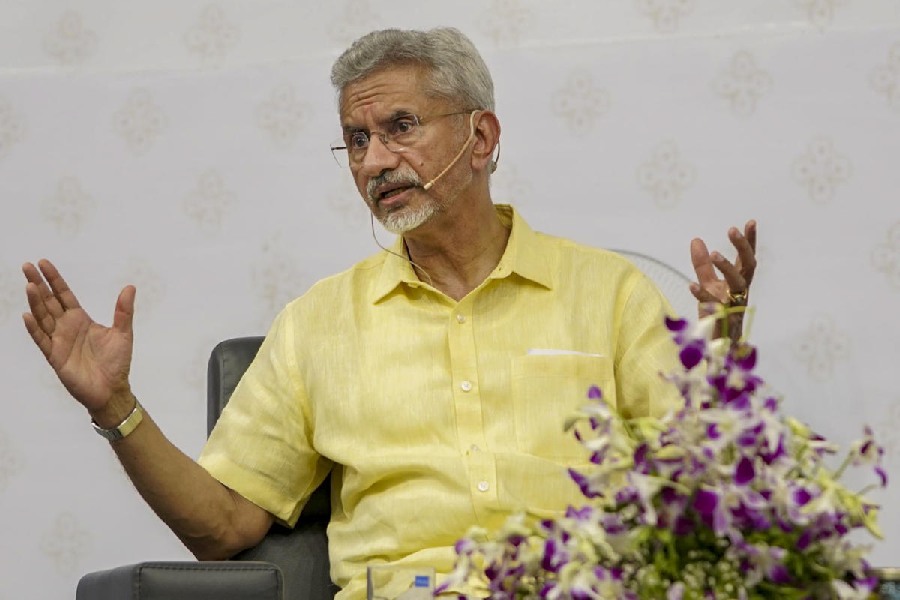|
|
| Hacked to death: The new law will help to counter deforestation |
When Parliament passed the Forest Conservation Act (FCA) in 1980, one of its main objectives was to promote afforestation to compensate for the massive diversion of forest lands for development purposes. In fact, under the FCA and the Forest (Conservation) Rules, 2003, it is mandatory for all state governments to get an approval from the Centre before diverting “notified forest lands” for non-forest use. They also have to present a detailed “compensatory afforestation” plan.
But over the years, most state governments have simply ignored the rules. They have not only failed to carry out the regeneration of forests, but have also diverted funds meant for afforestation to other purposes.
To deal with this lackadaisical attitude toward afforestation, the Union ministry of environment and forests has introduced the Compensatory Afforestation Fund Bill, 2008. The bill proposes to streamline efforts to regenerate forests by formally setting up a Compensatory Afforestation Fund Management and Planning Authority (CAMPA). This body will be put solely in charge of determining compensation amounts, identifying lands for afforestation, and will also be responsible for the proper utilisation of funds.
An ad hoc CAMPA is already in place following a Supreme Court directive on May 5, 2006. It has pooled in compensatory afforestation funds to the tune of about Rs 5,000 crore collected by the state governments and the Union territories. But so far, the money has been lying unused.
According to the ministry of environment and forests, between 1980 and 2001, state governments utilised only 30 per cent of the afforestation funds collected from user agencies (industries, mines and others) for regeneration of forests.
Finally, the Supreme Court cracked the whip. Starting with an interim order in the T.N. Godavarman Thirumalpad versus Union of India case in 2002, and following it up with a series of others, it asked the Union government to set up a separate compensatory afforestation fund.
Though the Compensatory Afforestation Fund Bill clearly follows the Supreme Court directive, it is already facing flak from environmentalists, state governments, economists, and industrialists. Even the parliamentary standing committee on science and technology, environment and forests has criticised the bill’s provisions.
One of the major points of contention in the bill is its preamble. The preamble says that compensatory funds from the user agencies will be “collected for undertaking artificial regeneration (plantations), assisted natural regeneration, protection of forests, infrastructure development, Green India Programme, wildlife protection and other related activities and for matters connected therewith or incidental thereto.”
Green India, an afforestation programme for the greening of six million hectares of degraded forest land, was launched last year.
But environmentalists feel that diverting compensatory afforestation funds to existing government-aided programmes would be unfair.
“Why should money collected in the name of compensatory afforestation be used for government programmes like Green India, wildlife protection and others that have separate budget allocations?” asks Ritwick Dutta, a Supreme Court lawyer who fights environmental and conservation-related cases.
Others point out that the composition of CAMPA could also pose a problem. “At a time when everybody is talking about devolution of powers and more involvement of local stakeholders, CAMPA will be like a behemoth that will take ages to move,” says Kanchi Kohli, member, Kalpavriksh Environment Action Group, Delhi.
And CAMPA will indeed be big. As provided in Clause 7(3) of the bill, it will consist of four groups — a governing body, an executive body, a monitoring group and an administrative support mechanism. “How far CAMPA would be able to engage itself in clearing hundreds of proposals for the utilisation of compensatory funds received from the states and the Union territories could be anybody’s guess,” says the report of the parliamentary standing committee.
Activists are also up in arms over the fact that the bill talks about the diversion of protected areas such as national parks, sanctuaries, bio-reserves and forests for other purposes. “This will lead industries to think that they can now buy land anywhere by paying the compensation — even if it is in the most protected and preserved areas of the country,” says Kohli.
“One should not determine a net present value (compensatory value) of protected areas. Instead they should be deemed to possess incomparable value in terms of their environmental, regulatory and cultural services,” says Seema Purushothaman, fellow, Ashoka Trust for Research in Ecology and the Environment (ATREE), Bangalore.
Clause 2 (g) of the bill defines net present value (NPV) as the “quantification of the environmental services provided for the forest area diverted for non-forestry uses as may be determined by an expert committee appointed by the Central government from time to time in this regard.”
However, the bill has not incorporated the recommendations of an expert committee set up by the Supreme Court in 2006. The expert committee, headed by Kanchan Chopra, director, Institute of Economic Growth (IEG), Delhi, had recommended using a mix of economic tools such as the NPV and legal instruments such as prohibiting the conversion of protected areas.
“The case by case approach to determining the value of converted land recommended by the committee has been given up. This implies that compensation to all stakeholders is not being ensured. This could lead to conflict in due course,” says Chopra.
The mining industry too is unhappy with the bill. “We are already suffering owing to the many existing laws related to forests and conservation. This new law with a new compensatory regime will only overburden us,” says R.K. Sharma, general secretary, Federation of Indian Mineral Industries.
Environmental activists feel that the bill lacks clarity on the quality of forest cover to be regenerated in place of the one that has been diverted. “The forest is a natural eco-system. Simply planting trees in place of pristine forests will not solve the problem. The bill also fails to address the issue of providing local adivasis dependent on forests with an alternate livelihood,” says Shankar Gopalakrishnan, secretary, Campaign for Survival and Dignity, a platform for tribal and forest dwellers’ organisations.
After listening to a cross section of experts, the parliamentary standing committee has called for the setting up of a National Afforestation and Eco-development Board under the ministry of environment and forests. This, the committee says, could be the nodal agency for dealing with compensatory afforestation funds. It has also recommended the involvement of state governments, panchayats and local forest dwellers in deciding if a particular forest land ought to be diverted for development purposes.
The government may or may not accept these recommendations. But if passed into a law, the Compensatory Afforestation Fund Bill will go some way in ensuring that the quantum of forest cover in the country is maintained.











